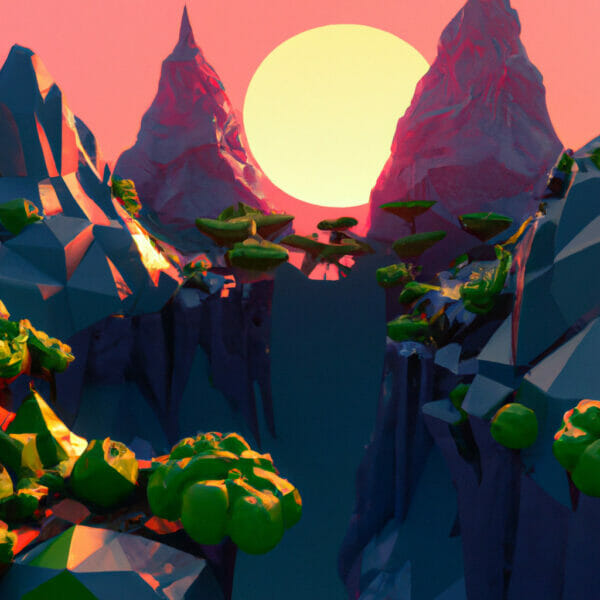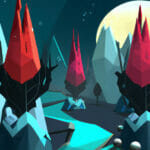Welcome to our comprehensive tutorial on ‘Roblox Cloning Objects’. If you have a curiosity for creating inventive and dynamic components in your Roblox game, cloning objects can be a game-changer in multiplying your game assets and making your game more engaging. Cloning in Roblox is a valuable and versatile skill. It allows gamers to replicate game objects and, hence, create complex gaming scenes without re-coding or manually creating duplicates.
Table of contents
What is Cloning in Roblox?
Cloning is a process in Roblox where you create an exact copy of an existing object. A clone carries the same properties as the original object but functions independently. You can modify its properties without affecting the original object.
Why should you learn Cloning in Roblox?
Learning cloning can save you plenty of time and coding. Instead of creating multiple individual objects, you can conveniently create duplicates of an object. Not only does it enhance game complexity and appearance, but it also conserves system memory and improves game performance.
The skill of cloning is essential for both beginners, who are just starting their coding journey, and experienced coders looking to create more dynamic and efficient games.
Creating Our First Clone
Let’s kick things off with a simple example: we’re going to start by cloning an object.
local OriginalObject = script.Parent -- This is the object that we want to clone local Clone = OriginalObject:Clone() -- This function will make a clone of the OriginalObject
The cloned object (Clone) now exists in memory, but isn’t visible in the workspace yet. To make it so, you must parent it to a visible area of the workspace:
Clone.Parent = workspace -- placing the Clone in the workspace
Cloning Multiple Objects
Creating multiple clones is quite similar; you just need to add a loop. Here’s an example:
for i = 1,10 do -- We will create 10 clones
local Clone = OriginalObject:Clone()
Clone.Parent = workspace
endYou’ll have ten new objects in your workspace, identical to the original!
Positioning Clones
By default, all clones will appear in the same position as the original object. Let’s learn how to position our clones:
for i = 1, 10 do
local Clone = OriginalObject:Clone()
Clone.Position = Clone.Position + Vector3.new(5 * i, 0, 0) -- shifting clone’s position
Clone.Parent = workspace
endIn this example, each new clone gets a position 5 studs to the right of the previous clone. This way, we can distribute cloned objects across the workspace!
Modifying Properties of Clones
Clones aren’t simply stuck to the attributes of their original object – you can modify their properties to suit your needs:
for i = 1, 10 do
local Clone = OriginalObject:Clone()
Clone.BrickColor = BrickColor.Random() -- changing clone color to random
Clone.Parent = workspace
endThis will create ten colorfully random clones. With cloning, you can create as diverse a setup as you desire!
Working with Nested Clones
Working with nested objects can bring complexity and depth to your games. Let’s take a look at a basic nested cloning example:
local Clone = workspace.Model:Clone() -- cloning a model
for i, part in ipairs(Clone:GetChildren()) do -- looping through each part in the model
if part:IsA("BasePart") then -- verifying it is a "BasePart"
part.BrickColor = BrickColor.Random() -- changing its color
end
end
Clone.Parent = workspace -- placing the clone in the workspaceThis script clones a model, then examines and modifies each contained part’s color before placing it in the workspace.
Incorporating Physics with Clones
Clones maintain the physics of their original objects, but we can script behaviors to interact with Roblox’s physics engine. Let’s simulate a bunch of bouncing balls:
local ball = game.workspace.Ball --the original ball
for i = 1, 10 do
local ballClone = ball:Clone()
ballClone.Position = ballClone.Position + Vector3.new(5 * i, 0, 0) -- shifting clone’s position
ballClone.Velocity = Vector3.new(0, 50, 0) -- adding upward motion
ballClone.Parent = workspace
endHere, each ball clone is positioned similarly to previous examples, but we’ve added an upward velocity to give them a bounce!
Creating Interactive Clones
We can create more engaging games by making clones that respond to player actions. Let’s clone a button that emits a sound when pressed:
local button = game.workspace.Button --the original button
local sound = Instance.new("Sound") --creating a new sound instance
sound.SoundId = "rbxassetid://301964312" -- setting the sound ID you want to play
for i=1, 5 do
local buttonClone = button:Clone()
buttonClone.Position = buttonClone.Position + Vector3.new(5 * i, 0, 0) -- shifting clone’s position
buttonClone.ClickDetector.MouseClick:Connect(function() -- function to execute when the button is clicked
sound.Parent = buttonClone
sound:Play()
end)
buttonClone.Parent = workspace
endThese are just a few examples of what is possible with cloning in Roblox. From duplicating simple bricks, to making intricate nested models, to positioning clones in space, to incorporating physics and more, cloning can profoundly enhance the complexity and dynamism of your Roblox game. Most importantly, it allows you to conserve resources, focus on the game logic, and tweak minor details to your heart’s content.
Remember, practice makes perfect. Keep cloning and keep experimenting!
Working With Clone Properties
Each clone object in Roblox inherits the exact same properties as the original. However, these can be changed based on requirements. Let’s demonstrate this with a few examples:
Changing Clone Size
If you want to resize a clone dynamically, you can adjust the size property. Let’s make each clone larger than the previous one:
for i = 1, 10 do
local Clone = OriginalObject:Clone()
Clone.Size = Vector3.new(i, i, i) -- changing the size of each clone incrementally
Clone.Parent = workspace
endThis code steadily increases the size of each clone, giving your workspace a stair-step effect.
Manipulating Clone Transparency
You can manipulate the Transparency property of a clone to have various visual effects. Here is how you can progressively increase the transparency of clones:
for i = 1, 10 do
local Clone = OriginalObject:Clone()
Clone.Transparency = i / 10 -- increasing transparency of clones incrementally
Clone.Parent = workspace
endThis results in a sequence of clones that gradually fade out, an effect that could be handy in many game scenarios.
Modifying Clone Colors
Colors can add vibrant impressions to your game. Let’s make each clone a different color using the BrickColor property:
for i = 1, 20 do -- creating 20 clones
local Clone = OriginalObject:Clone()
Clone.BrickColor = BrickColor.new(i) -- changing each clone's color
Clone.Parent = workspace
endThis creates a varied, colorful sequence of clones in your workspace. Such diversity can add richness and visual appeal to your games.
Working with Clone Rotations
Rotating clones can introduce exciting dynamics into your games. Here’s a simple demonstration of rotating clones:
for i = 1, 10 do
local Clone = OriginalObject:Clone()
Clone.Orientation = Vector3.new(0, i * 36, 0) -- rotating each clone clockwise
Clone.Parent = workspace
endThis example creates a sequence of clones, each rotated 36 degrees clockwise from the last. Your workspace now has a circular series of clones!
By manipulating clone properties, you can vastly broaden the visual dynamics and functionality in your game. Whether you’re resizing clones, adjusting their transparency, playing with their color, or rotating them, these strategies make your game more engaging and visually appealing.
Interested in going deeper with your Roblox scripting skills? We invite you to explore our Roblox Game Development Mini-Degree. This collection of online courses, designed by us at Zenva Academy, covers a wide range of topics including Roblox basics, scripting, melee battle games, and first-person shooters, among others. Both beginners and experienced developers will find the content meaningful and applicable.
Pursuing practical game development skills with Roblox, a platform hosting millions of users monthly, can help open doors into the lucrative gaming market. Zenva Academy offers a flexible, project-based learning environment, with access to live coding lessons and interactive quizzes. Our experienced instructors are certified coders and passionate gamers, committed to helping you succeed on your coding journey.
If you want to further broaden your horizons, take some time to browse through our comprehensive range of Roblox courses. Whatever your programming skill level, we at Zenva are here to support your learning, from beginner to professional. Keep creating, keep dreaming, and keep cloning!
Conclusion
So, there you have it – a complete journey through the exciting world of cloning in Roblox! You’ve learned how to create, modify, and manipulate clone objects to enrich your gaming universe and maximize efficiency. Whether you’re creating multiple clones, adjusting positions, or modifying properties like color and size, mastering cloning can significantly enhance your Roblox game-creating skills.
Want to delve deeper into your Roblox learning? We welcome you to join our Roblox Game Development Mini-Degree. Here at Zenva, we provide hands-on training to help you enhance your coding prowess and bring your gaming ideas to life. Happy cloning, and enjoy your game development journey!
Did you come across any errors in this tutorial? Please let us know by completing this form and we’ll look into it!

FINAL DAYS: Unlock coding courses in Unity, Godot, Unreal, Python and more.







